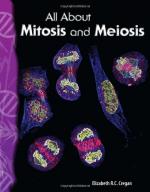|
This section contains 1,687 words (approx. 6 pages at 300 words per page) |

|
Meiosis is a type of cell division that, in humans, occurs only in male testes and female ovary tissue, and, together with fertilization, it is the process that is characteristic of sexual reproduction. Meiosis serves two important purposes: it keeps the number of chromosomes from doubling each generation, and it provides genetic diversity in offspring. In this it differs from mitosis, which is the process of cell division that occurs in all somatic cells.
Overview
All of our somatic cells except the egg and sperm cells contain twenty-three pairs of chromosomes, for a total of forty-six individual chromosomes. This number, twenty-three, is known as the diploid number. If our egg and sperm cells were just like our somatic cells and contained twenty-three pairs of chromosomes, their fusion during fertilization would create a cell with forty-six chromosome pairs, or ninety-two chromosomes total. To prevent that from happening and to...
|
This section contains 1,687 words (approx. 6 pages at 300 words per page) |

|


